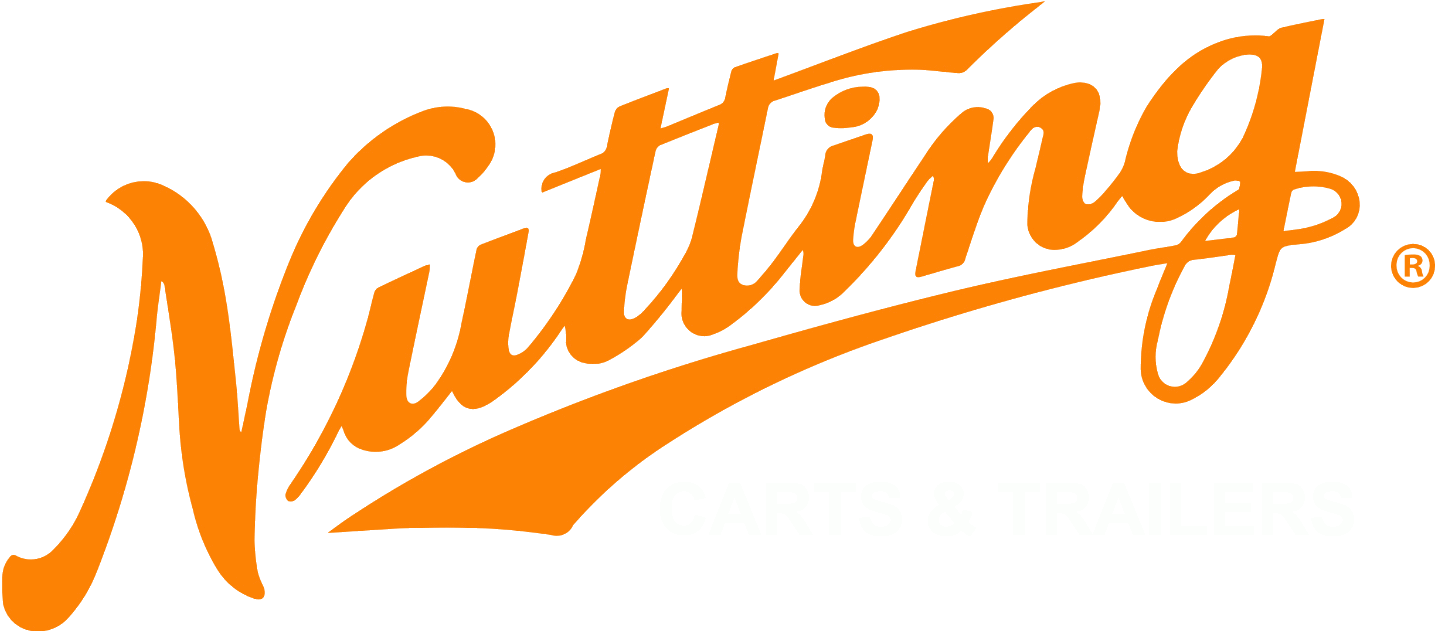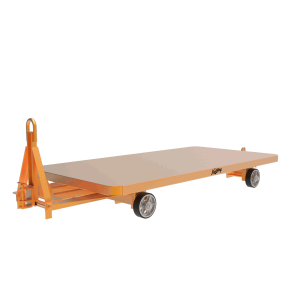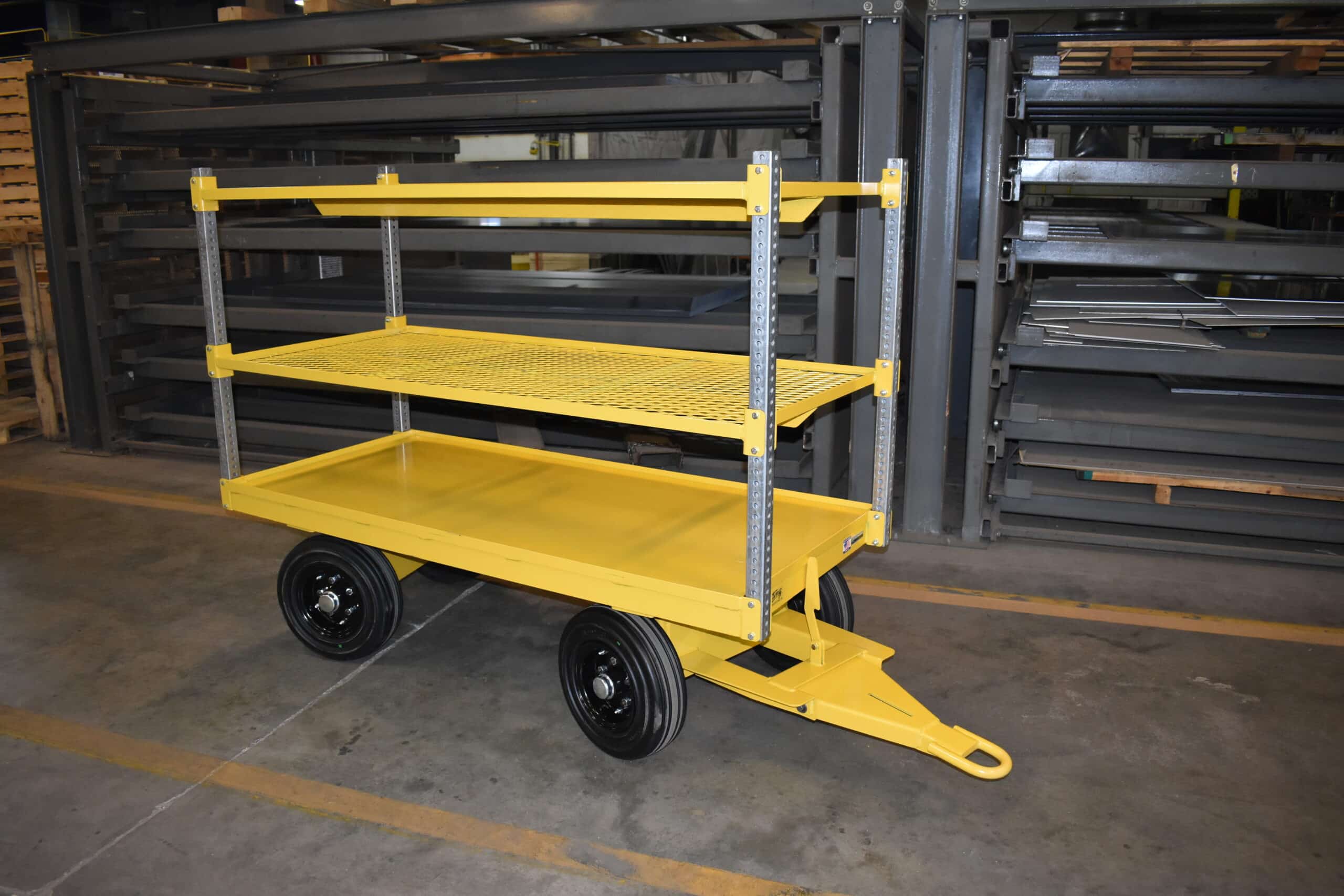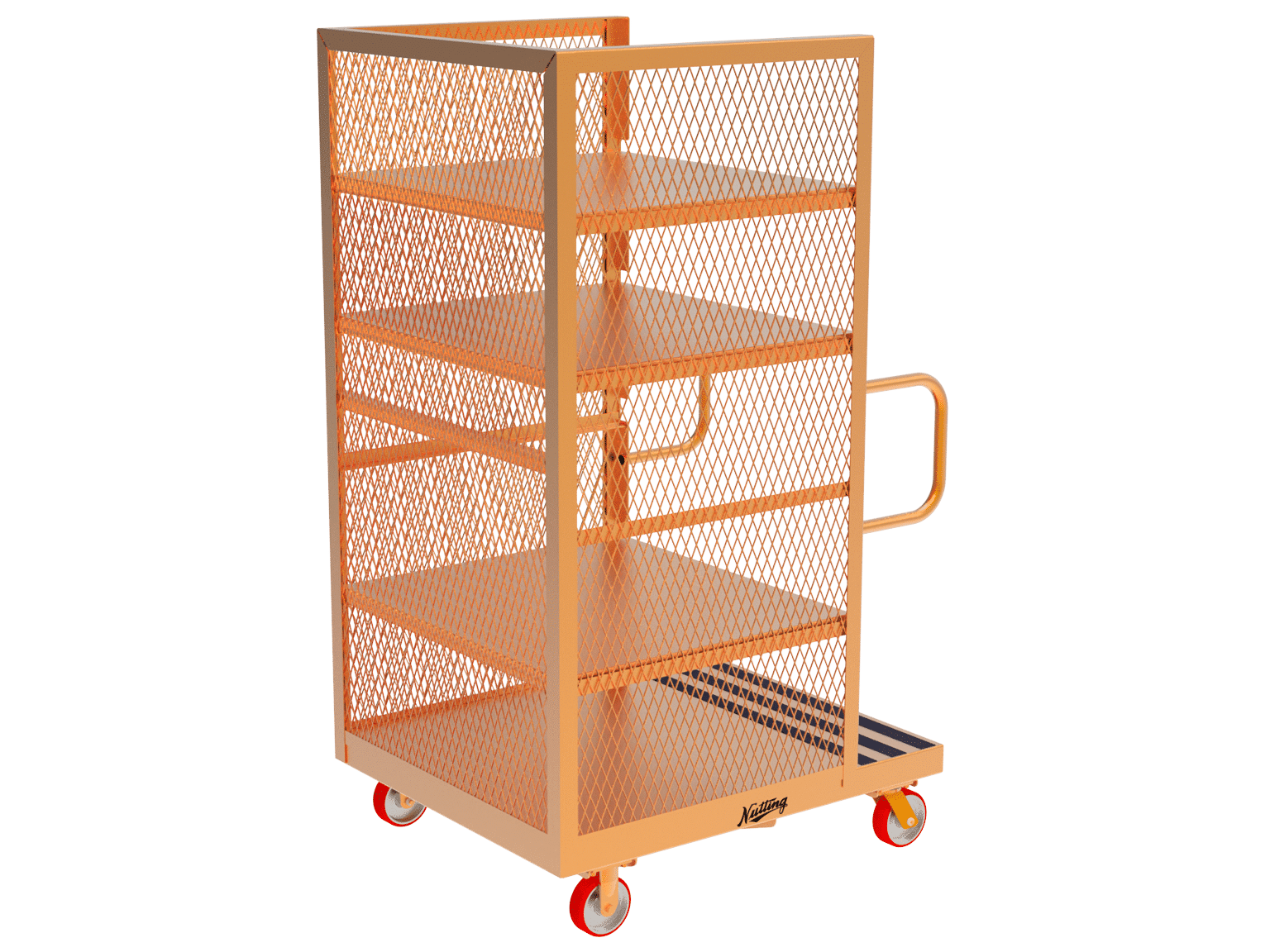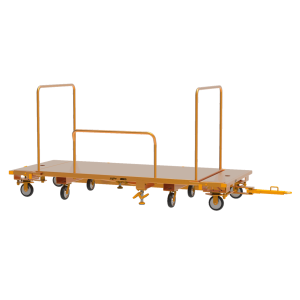Proper lifting techniques, the NIOSH Lifting Equation, and reliance on automation can reducing the risk of injuries from heavy lifting in material handling.
In the world of material handling, safety isn’t just a priority; it’s a necessity. An efficient material handling process heavily relies on the proper safety measures to ensure not just the smooth operation of workflow, but also the well-being of the employees. For industries engaged in material handling, from logistics to warehousing and manufacturing, prioritizing safety means prioritizing productivity and continuity of operations.
Indeed, the direct implications of safety in this sector are twofold. Most importantly, it protects the workforce from potential injuries or health hazards associated with heavy lifting and other strenuous activities. It also reduces the likelihood of equipment damage and product loss due to mishandling, which can, in turn, lead to costly downtime, delayed deliveries, and the undermining of customer trust. Thus, prioritizing safety is also a smart financial decision that can significantly boost a company’s bottom line.
So what is considered heavy lifting at work? Well, the answer is that what is considered “too heavy” depends on a wide variety of factors and differs from person to person. But keep reading to learn more about how to protect yourself when performing lifts and how to determine if a load may be better moved with a partner or material handling equipment.
Understanding the Risks Associated with Heavy Lifting
The risks associated with heavy lifting in warehouses and material handling settings are considerable and varied. Without the correct safety measures and equipment in place, employees are exposed to several potential hazards that can lead to both acute and chronic injuries.
One of the most common risks is musculoskeletal disorders (MSDs), like back injuries and sprains, often caused by manual lifting, lowering, pushing, pulling, or carrying heavy loads. These injuries not only affect the health and welfare of employees but also lead to absenteeism, lower productivity, and increased compensation claims.
Another risk factor is the potential for accidents, like being struck by or caught between objects, which can be caused by the improper handling of heavy loads. These accidents can lead to severe, sometimes fatal injuries.
There are also long-term health risks associated with repetitive heavy lifting including the development of conditions like hernias, chronic back pain, and even cardiovascular issues.
Understanding these risks is the first step in mitigating them. By creating a culture of safety, implementing correct lifting techniques, and utilizing suitable material handling equipment, businesses can substantially reduce these risks, protect their employees, and maintain efficient operations.
Proper Lifting Techniques for Manual Material Handling
Even with the best material handling equipment, there will be instances where manual lifting is necessary. Understanding proper body mechanics and lifting techniques is crucial to prevent injury. Here are some general guidelines:
Maintain a Wide Base of Support: Stand with your feet shoulder-width apart, with one foot slightly ahead of the other for balance.
Squat Down: Bend at the knees, not the waist, keeping your back straight.
Secure the Load: Ensure a firm grip on the object before attempting to lift it.
Lift Slowly and Steadily: Using your leg muscles, stand up straight. Avoid jerking or twisting movements.
Keep the Load Close to Your Body: This reduces strain on your back.
Lead with Your Hips, Not Your Shoulders: When changing direction, turn by moving your feet, not by twisting your torso.
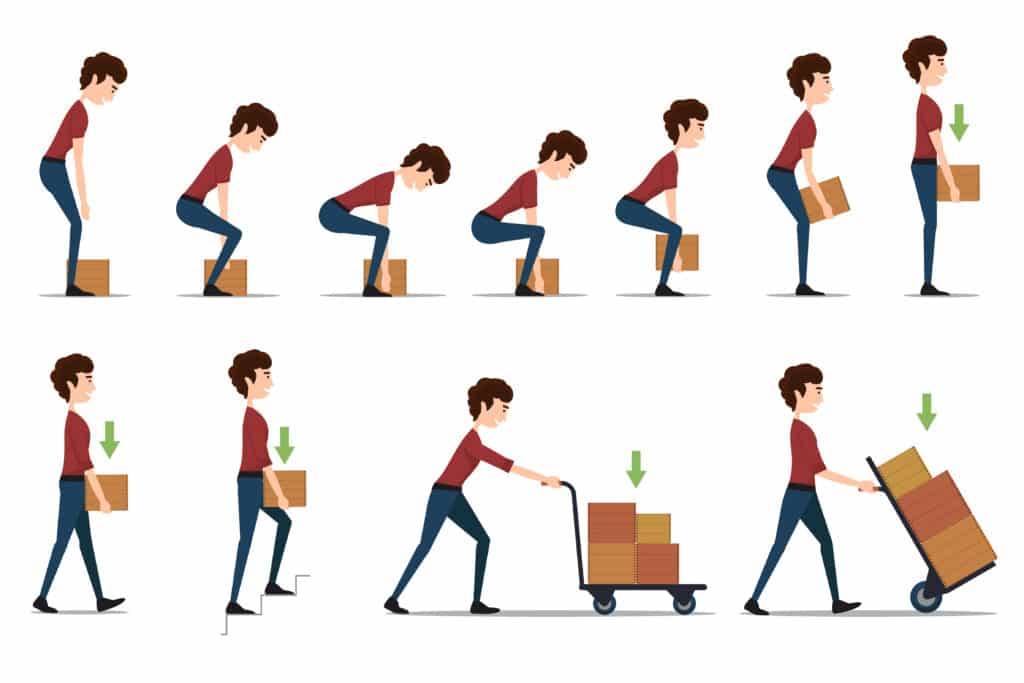
Safe Lifting Guidelines and OSHA Standards
When it comes to lifting, there’s one golden rule: If it’s too heavy, don’t try to be a superhero—get help or use the right equipment. But how do you know what’s too heavy? Well, that’s where things get a bit tricky.
Officially, OSHA (Occupational Safety and Health Administration) doesn’t provide a specific maximum lifting weight limit that applies to all situations. Instead, they recommend using the NIOSH (National Institute for Occupational Safety and Health) Lifting Equation, which considers factors like the weight of the object, the position of the lifter, the height of the lift, and the duration of the task. Keep reading to learn more about how this equation works.
As a general guideline, the UK’s Health and Safety Executive suggests that men should not lift items weighing more than 55 lbs (25 kg) at waist height, and women should not lift items weighing more than 35 lbs (16 kg). If the lifting operation involves awkward postures or movements, like reaching above shoulder height, the recommended weight limit decreases significantly.
Of course, these are just guidelines. Every person is different, and what might be a comfortable weight for one person could be a strain for another. The key is to listen to your body and never push beyond your comfort zone.
For more detailed information on safe lifting practices, you can check out the Manual Handling section of OSHA’s website, which provides lots of resources on how to lift safely and prevent lifting injuries.What is the NIOSH Lifting Equation?
The NIOSH Lifting Equation is a tool developed by the National Institute for Occupational Safety and Health (NIOSH) to aid employers and occupational health and safety professionals in performing a risk assessment of manual lifting tasks. This equation helps in designing safer manual lifting jobs by considering multiple factors that contribute to the risk of injury.
The Revised NIOSH Lifting Equation is the most recent version and is defined as:
RWL = LC × HM × VM × DM × AM × FM × CM
Where:
RWL (Recommended Weight Limit) is the weight of the load that nearly all healthy workers could perform over a substantial period of time (e.g., up to 8 hours) without an increased risk of developing lifting-related low back pain.
LC (Load Constant) is a factor representing the maximum recommended load weight (51 lbs or 23 kg under ideal conditions).
HM (Horizontal Multiplier) accounts for how far the load is held from the body.
VM (Vertical Multiplier) accounts for the vertical location of the hands at the start of the lift relative to the floor.
DM (Distance Multiplier) accounts for the vertical distance over which the load is lifted.
AM (Asymmetric Multiplier) accounts for twisting or turning during lifting.
FM (Frequency Multiplier) accounts for the lifting frequency and duration of the lifting task.
CM (Coupling Multiplier) accounts for the quality of the hand-to-object coupling (i.e., how well the hands can grasp the object being lifted).
By evaluating these factors, the NIOSH Lifting Equation provides a maximum safe weight limit for specific lifting tasks. If the actual weight of the load exceeds the RWL, the lift is considered to present a higher risk of injury.
Please note that using the NIOSH Lifting Equation involves a detailed assessment process. For full instructions and interpretations, you should refer to official NIOSH documentation or work with a trained occupational health professional.
The Role of Assistive Equipment and Automation in Keeping Our Backs Happy and Healthy
Nowadays, automation is the name of the game, especially in the material handling world.
Automation takes the heavy lifting—literally—out of our hands. When machines and hand trucks do the heavy lifting, our workers are far less likely to strain a muscle, sprain a wrist, or suffer from lower back injuries that can come from moving heavy items around all day. So, we’re not just saving time, we’re saving ourselves from some pretty nasty aches and pains too.
And here’s the cherry on top: with machines doing the physical work, your employees can focus on tasks that need human touch, like quality control or customer service.
Material Handling Equipment Improves Efficiency and Reduces Injury Risks
Material handling equipment plays an integral role in improving efficiency and reducing the risk of injury within material handling settings. These tools help streamline operations by enabling quicker movement of goods, reducing manual labor, and minimizing the risk of accidents or injuries caused by human error.
By using material handling equipment, workers can move heavier loads than they could manually, and over larger distances, saving both time and physical effort. In doing so, these tools not only boost productivity but also minimize the risk of injuries associated with lifting and transporting heavy objects, a primary concern in warehouse settings.
And there you have it! By prioritizing lifting safety and making use of material handling equipment and automation, you’re well on your way to a safer, more efficient warehouse.
